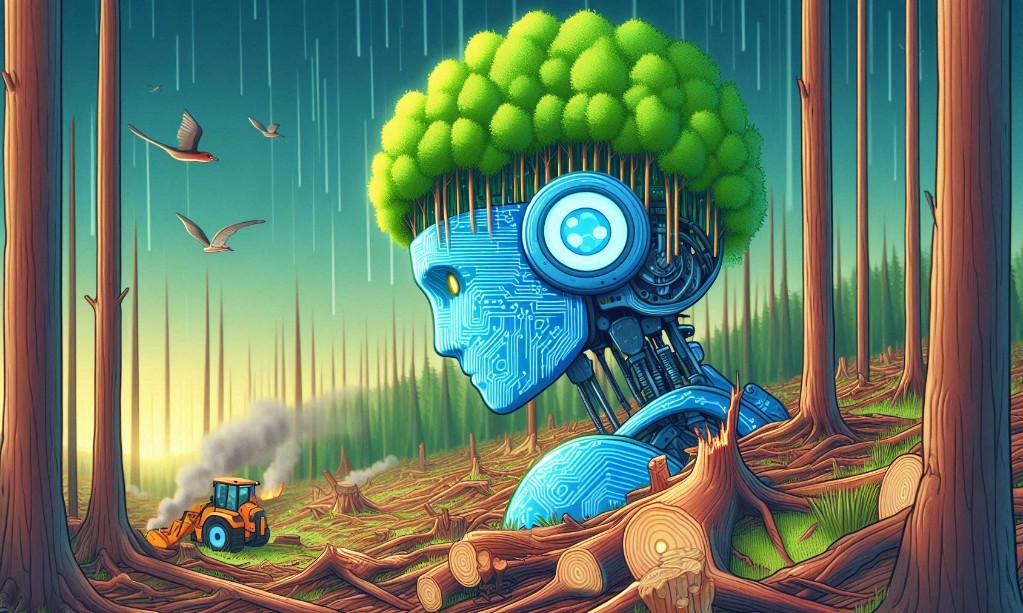In recent years, there has been a significant advancement in the field of Artificial Intelligence (AI) and Augmented Reality (AR). These technologies have become increasingly popular and have the potential to enhance virtual experiences in various fields such as gaming, education, healthcare, and...
Artificial Intelligence vs Deforestation A Chance for Success

The growing environmental crisis calls for innovative solutions that leverage advanced technologies to address pressing ecological challenges. One of the most urgent issues facing our planet today is the loss of natural habitats, which has widespread consequences for biodiversity, climate, and overall ecological balance. With the rapid advancement of modern technology, we now have powerful tools that could play a pivotal role in mitigating these environmental threats.
By utilizing cutting-edge systems and data-driven approaches, we have the potential to monitor, predict, and even reverse the damage caused by human activities. These tools not only promise to help in the management and protection of vital ecosystems, but also offer new methods for restoring areas that have been harmed over time. Through collaborative efforts, we can harness these technological advancements to build a more sustainable future.
In this article, we will examine how technology is being employed to combat environmental degradation and the significant impact it could have in restoring our planet’s most valuable resources.
The Role of AI in Environmental Protection
Technological advancements are increasingly becoming essential in addressing global environmental challenges. With the need to protect natural resources and ecosystems, modern systems are providing new opportunities to manage and reduce the impact of human activities. These innovations offer solutions to monitor ecosystems, predict changes, and optimize strategies to preserve the planet’s most important assets.
Monitoring and Early Detection
One of the key contributions of advanced technologies to environmental conservation is their ability to monitor vast areas in real-time. Through satellite imagery, drones, and sensors, we can gather valuable data to track changes in ecosystems. This allows for:
- Early detection of illegal activities such as logging or poaching
- Tracking environmental changes in remote areas
- Monitoring forest health and biodiversity
Predicting Environmental Trends
Another significant aspect of technology is its predictive capabilities. By analyzing large datasets, systems can forecast environmental trends, allowing for proactive measures to prevent further degradation. These predictions help to:
- Identify potential areas at risk of ecological collapse
- Develop targeted conservation strategies
- Enhance resource management practices to minimize waste and harm
By integrating these technologies into environmental strategies, we can ensure more effective and sustainable outcomes for ecosystems worldwide. The potential to use these advancements for environmental protection is vast and continually evolving.

Innovative Solutions to Combat Deforestation
As the global environment faces increasing pressures, it becomes more crucial to develop novel strategies aimed at preserving and restoring natural habitats. Innovations in technology and sustainable practices offer promising solutions to reduce habitat loss and restore vital ecosystems. These methods not only help prevent further destruction but also facilitate the regeneration of affected areas, offering hope for a healthier planet.
Technology-Driven Approaches
Technological advancements have proven essential in the fight against habitat loss. Modern tools such as remote sensing, drones, and machine learning models enable us to monitor large landscapes and identify problem areas quickly. These tools contribute to:
- Precise mapping of threatened ecosystems
- Real-time monitoring of land-use changes
- Detecting illegal logging and encroachment activities
Sustainable Land Management Practices
Another important solution lies in adopting more sustainable agricultural practices. Implementing land management strategies such as agroforestry, reforestation, and improved crop rotation can help reduce the need for extensive land clearing. These practices offer:
- Alternatives to slash-and-burn techniques
- Improved soil health and biodiversity conservation
- Increased local involvement in resource management
By combining innovative technologies with sustainable land-use strategies, we can take significant steps toward reversing environmental damage and creating a more sustainable future.
How Technology Can Preserve Forests
With the growing threat to global forests, technological advancements have become a powerful tool in efforts to safeguard these vital ecosystems. By harnessing modern innovations, we can not only monitor forest health but also implement strategies that support their long-term preservation. Technology offers new ways to prevent further damage while aiding in restoration efforts.
One of the key ways technology can help preserve forests is through enhanced monitoring capabilities. Satellite imagery and drones provide real-time data, allowing experts to track changes in forest coverage, detect illegal activities, and identify areas that require immediate attention. These tools enable more effective responses to threats and contribute to the protection of forest resources.
Additionally, machine learning models are increasingly being used to predict and analyze forest health. By processing large datasets, these models can forecast potential risks such as pest outbreaks or fire susceptibility. Early detection of such threats allows for timely intervention and more targeted conservation efforts, ultimately improving forest resilience.
Finally, the integration of sustainable land management technologies enables more responsible resource use. From precision agriculture to the development of eco-friendly logging practices, these innovations help reduce human impact on forest ecosystems, ensuring their preservation for future generations.



